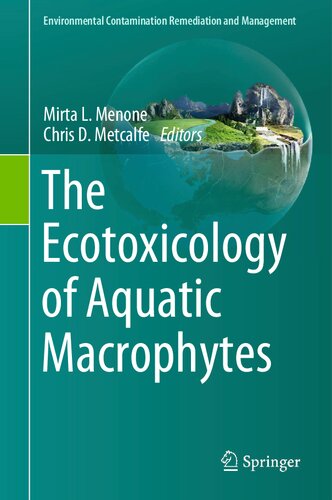

Most ebook files are in PDF format, so you can easily read them using various software such as Foxit Reader or directly on the Google Chrome browser.
Some ebook files are released by publishers in other formats such as .awz, .mobi, .epub, .fb2, etc. You may need to install specific software to read these formats on mobile/PC, such as Calibre.
Please read the tutorial at this link: https://ebookbell.com/faq
We offer FREE conversion to the popular formats you request; however, this may take some time. Therefore, right after payment, please email us, and we will try to provide the service as quickly as possible.
For some exceptional file formats or broken links (if any), please refrain from opening any disputes. Instead, email us first, and we will try to assist within a maximum of 6 hours.
EbookBell Team

4.8
64 reviewsThis book focuses on the topic of ecotoxicology of aquatic macrophytes and is wide ranging, including the use of macrophytes for remediation of contaminated sites. Many human activities are threats to the equilibrium of natural ecosystems. Pollution from point and non-point sources can be assessed using a variety of techniques, such as biomonitoring, biomarkers and biosensors. In aquatic ecosystems, biomonitoring of pollutants is mostly conducted by analysis of the tissues of invertebrates and fishes, and biomarker studies are also more widely applied to animals rather than in plants. Aquatic macrophytes occupy a key niche in aquatic ecosystems and provide a range of ecosystem services. In addition to their role in primary production, vegetation plays a key role in the cycling and retention of nutrients and generally acts as a sink for pollutants. Therefore, because of their importance to aquatic ecosystems, more attention should be paid to understanding the fate of pollutants and to developing methods to evaluate the health status of macrophytic plants in freshwater, marine and estuarine environments.